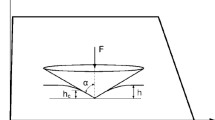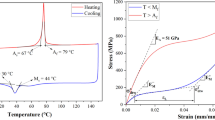Abstract
The continuously growing need for quality assurance and systems integration in plastics manufacturing, promoted by Industry 4.0 technologies as well as interest in sustainability and recycling, creates significant opportunities for advanced multivariate in-mold sensing. This work describes the design of a multivariate shrinkage sensor (MVSS) incorporating a spring-biased pin with a digital linear displacement transducer to measure in-mold shrinkage directly. The multivariate sensor also incorporates a piezoelectric ring for cavity pressure measurement and an infrared detector for melt and mold temperature acquisition. The combined use of the sensor signals allows real-time process monitoring and prediction of the molded part dimensional quality. A design of experiments (DOE) was used to validate the sensor functionality for an amorphous high-impact polystyrene (HIPS) and a semicrystalline polypropylene (PP). The results indicated that the root mean square error of the predicted thicknesses was 6.3 microns (i.e., 0.21%) for a regression model based on the DOE factor settings, 4.8 microns (i.e., 0.16%) based on traditional cavity pressure and temperature data, and 3.4 microns (i.e., 0.11%) based on just the available MVSS data. The modeled main effects highlight the different shrinkage behavior of HIPS and PP indicating the need for in-mold shrinkage data.









Similar content being viewed by others
References
Aeppel T (2002) Workers not included. The Wall Street Journal, New York, p B1
Ageyeva T, Horváth S, Kovács JG (2019) In-mold sensors for injection molding: on the way to Industry 4.0. Sensors (Switzerland) 19(16). https://doi.org/10.3390/s19163551
Masato D, Babenko M, Shriky B, Gough T, Lucchetta G, Whiteside B (2018) Comparison of crystallization characteristics and mechanical properties of polypropylene processed by ultrasound and conventional micro-injection molding. Int J Adv Manuf Technol 99(1–4):113–125. https://doi.org/10.1007/s00170-018-2493-9
Lucchetta G, Masato D, Sorgato M, Crema L, Savio E (2016) Effects of different mould coatings on polymer filling flow in thin-wall injection moulding. CIRP Ann Manuf Technol 65(1):537–540. https://doi.org/10.1016/j.cirp.2016.04.006
Chen JY, Hung PH, Huang MS (2021) Determination of process parameters based on cavity pressure characteristics to enhance quality uniformity in injection molding. Int J Heat Mass Transf 180. https://doi.org/10.1016/j.ijheatmasstransfer.2021.121788
Kazmer DO, Knepper P, Johnston S (2005) “A review of in-mold pressure and temperature instrumentation. In: SPE ANTEC Conference Proceedings, pp 3300–3304
Groleau RJ (2004) Best Practices with In-mold Sensors. Society of Plastics Engineers Regional Technical Conference, Erie
Farahani S et al (2019) Evaluation of in-mold sensors and machine data towards enhancing product quality and process monitoring via Industry 4.0. Int J Adv Manuf Technol 105(1–4):1371–1389. https://doi.org/10.1007/s00170-019-04323-8
Deloitte (2021) 2022 Manufacturing industry outlook. Accessed 20 Jun 2022. [Online]. Available: https://www2.deloitte.com/us/en/pages/energy-and-resources/articles/manufacturing-industry-outlook.html
Manufacturers Alliance, “Next-generation connectivity: 5G’s role in advancing manufacturing,” 2020. Accessed: Jun. 20, 2022. [Online]. Available: https://www.manufacturersalliance.org/research-insights/next-generation-connectivity
Chen Z, Turng LS (2005) A review of current developments in process and quality control for injection molding. Adv Polym Technol 24(3):165–182. https://doi.org/10.1002/adv.20046
Javaid M, Haleem A, Singh RP, Rab S, Suman R (2021) Significance of sensors for Industry 4.0: roles, capabilities, and applications. Sensors International, vol. 2. KeAi Communications Co. https://doi.org/10.1016/j.sintl.2021.100110
Kazmer DO et al (2021) Multivariate modeling of mechanical properties for hot runner molded bioplastics and a recycled polypropylene blend. Sustainability (Switzerland) 13(14). https://doi.org/10.3390/su13148102.
Tang SH, Tan YJ, Sapuan SM, Sulaiman S, Ismail N, Samin R (2007) The use of Taguchi method in the design of plastic injection mould for reducing warpage. J Mater Process Technol 182(1–3):418–426. https://doi.org/10.1016/j.jmatprotec.2006.08.025
Sadeghi BHM (2000) A BP-neural network predictor model for plastic injection molding process. J Mater Process Technol 103(3):411–416
Ke KC, Huang MS (2020) Quality prediction for injection molding by using a multilayer perceptron neural network. Polymers (Basel) 12(8). https://doi.org/10.3390/polym12081812
Kazmer DO, Nageri R, Kudchakar V, Fan B, Gao R (2006) Validation of three on-line flow simulations for injection molding. Polym Eng Sci 46(3):274–288. https://doi.org/10.1002/pen.20463
Johnston SP, Kazmer DO, Gao RX (2009) Online simulation-based process control for injection molding. Polym Eng Sci 49(12):2482–2491. https://doi.org/10.1002/pen.21481
Li Y, Chen JC, Ali WM (2021) Process optimization and in-mold sensing enabled dimensional prediction for high precision injection molding. Int J Interact Des Manuf. https://doi.org/10.1007/s12008-021-00800-1
Farahani S, Xu B, Filipi Z, Pilla S (2021) A machine learning approach to quality monitoring of injection molding process using regression models. Int J Comput Integr Manuf 34:1223–1236
Huang M-S, Chen J-Y, Xiao Y-Q (2022) Quality monitoring methodology for micro-shrinkage of thick-walled injection molded components. Accessed 26 Jun 2022. [Online]. Available: https://papers.ssrn.com/sol3/papers.cfm?abstract_id=4123030
Wang J, Mao Q (2013) A novel process control methodology based on the PVT behavior of polymer for injection molding. Adv Polym Technol 32(SUPPL):1. https://doi.org/10.1002/adv.21294
Masato D, Kazmer D, Rahul P (2021) Characterization of in-mold shrinkage using a multivariate sensor,” Annual Technical Conference - ANTEC, Conference Proceedings
Annicchiarico D, Alcock JR (2014) Review of factors that affect shrinkage of molded part in injection molding. Materials and Manufacturing Processes, 29(6). Taylor and Francis Inc., pp. 662–682. https://doi.org/10.1080/10426914.2014.880467
Jansen KMB, van Dijk DJ, Husselman MH (2007) Effect of processing conditions on residual stress and shrinkage in injection molding. Polym Eng Sci 58(1):248–254
Masato D, Rathore J, Sorgato M, Carmignato S, Lucchetta G (2017) Analysis of the shrinkage of injection-molded fiber-reinforced thin-wall parts. Mater Des 132. https://doi.org/10.1016/j.matdes.2017.07.032
Malloy R (1994) Plastic part design for injection molding. Hanser, New York
Annicchiarico D, Attia UM, Alcock JR (2013) A methodology for shrinkage measurement in micro-injection moulding. Polym Testing 32(4):769–777. https://doi.org/10.1016/j.polymertesting.2013.03.021
Attia UM, Alcock JR (2010) Optimising process conditions for multiple quality criteria in micro-injection moulding. Int J Adv Manuf Technol 533–542. https://doi.org/10.1007/s00170-010-2547-0
Annicchiarico D, Attia UM, Alcock JR (2013) Part mass and shrinkage in micro injection moulding : statistical based optimisation using multiple quality criteria. Polym Testing 32(6):1079–1087. https://doi.org/10.1016/j.polymertesting.2013.06.009
Hopmann C, Reßmann A, Heinisch J (2016) Influence on product quality by pvT-optimised processing in injection compression molding. Int Polym Proc 31(2):156–165. https://doi.org/10.3139/217.3058
Speranza V, Vietri U, Pantani R (2013) Monitoring of injection moulding of thermoplastics: adopting pressure transducers to estimate the solidification history and the shrinkage of moulded parts. Strojniski Vestnik/J Mech Eng 59(11):677–682. https://doi.org/10.5545/sv-jme.2013.1000
Kurt M, SabanKamber O, Kaynak Y, Atakok G, Girit O (2009) Experimental investigation of plastic injection molding: assessment of the effects of cavity pressure and mold temperature on the quality of the final products. Mater Des 30(8):3217–3224. https://doi.org/10.1016/j.matdes.2009.01.004
Thomas CL, Bur AJ (1999) In-situ monitoring of product shrinkage during injection molding using an optical sensor. Polym Eng Sci 39(9):1619–1627. https://doi.org/10.1002/pen.11556
Thomas CL, Bur AJ (1999) Optical monitoring of polypropylene injection molding. Polym Eng Sci 39(7):1291–1302. https://doi.org/10.1002/pen.11516
Pantani R, Jansen KMB, Titomanlio G (1997) In-mould shrinkage measurements of PS samples with strain gages. Int Polym Proc 12(4):396–402. https://doi.org/10.3139/217.970396
Kazmer DO, Johnston SP, Gao RX, Fan Z (2011) Feasibility analysis of an in-mold multivariate sensor. Int Polym Proc 26(1):63–72. https://doi.org/10.3139/217.2397
Gordon G, Kazmer DO, Tang X, Fan Z, Gao RX (2015) Quality control using a multivariate injection molding sensor. Int J Adv Manuf Technol 78(9–12):1381–1391. https://doi.org/10.1007/s00170-014-6706-6
Asadizanjani N, Gao RX, Fan Z, Kazmer DO (2012) Viscosity Measurement in injection molding using a multivariate sensor. In: International Symposium on flexible automation (Vol. 45110, pp. 231-237). American Society of Mechanical Engineers
Panchal RR, Kazmer DO (2010) In-situ shrinkage sensor for injection molding. J Manuf Sci E T ASME 132(6):1–6. https://doi.org/10.1115/1.4002765
Kazmer D, Rahul P, Johnston S (2014) Methods for forming injected molded parts and in-mold sensors therefor. U.S. Patent 8,753,553. Issued June 17
Rahul PR (2021) Multivariate shrinkage sensor (MVSS) for injection molding. U.S. Patent Application 17/318,951. Filed November 18
Montgomery DC (2017) Design and analysis of experiments. John Wiley & Sons
Zhou X, Zhang Y, Mao T, Ruan Y, Gao H, Zhou H (2018) Feature extraction and physical interpretation of melt pressure during injection molding process. J Mater Process Technol 261:50–60. https://doi.org/10.1016/j.jmatprotec.2018.05.026
Johnston S, McCready C, Hazen D, VanDerwalker D, Kazmer D (2015) On-line multivariate optimization of injection molding. Polym Eng Sci 55(12):2743–2750. https://doi.org/10.1002/pen.24163
Bolón-Canedo V, Sánchez-Maroño N, Alonso-Betanzos A (2013) A review of feature selection methods on synthetic data. Knowl Inf Syst 34(3):483–519. https://doi.org/10.1007/s10115-012-0487-8
Acknowledgements
The authors acknowledge the support of Deepak Mahale (UMass Lowell) and Devesh Kadambari (Leonine Technologies) for their assistance with the experimental work.
Funding
This work was funded by the National Science Foundation, Small Business Innovation Research (SBIR) Program, Grant No. 1843921 to Leonine Technologies Inc.
Author information
Authors and Affiliations
Contributions
The sensor used for the study was designed by Rahul Panchal. The experiments were designed by David Kazmer. The experimental work was carried out by David Kazmer and Davide Masato. Data analysis was carried out by David Kazmer. The first draft of the manuscript was written by Davide Masato and David Kazmer. All authors commented on previous versions of the manuscript. All authors read and approved the final manuscript. The funding to support this work was acquired by Rahul Panchal and David Kazmer.
Corresponding author
Ethics declarations
Competing interests
Rahul Panchal is the CEO of Leonine Technologies Inc., which has submitted a patent application for the MVSS sensor design (U.S. Patent Application 17/318,951, filed November 18, 2021).
Additional information
Publisher's Note
Springer Nature remains neutral with regard to jurisdictional claims in published maps and institutional affiliations.
Rights and permissions
Springer Nature or its licensor (e.g. a society or other partner) holds exclusive rights to this article under a publishing agreement with the author(s) or other rightsholder(s); author self-archiving of the accepted manuscript version of this article is solely governed by the terms of such publishing agreement and applicable law.
About this article
Cite this article
Masato, D., Kazmer, D.O. & Panchal, R.R. Analysis of in-mold shrinkage measurement for amorphous and semicrystalline polymers using a multivariate sensor. Int J Adv Manuf Technol 125, 587–602 (2023). https://doi.org/10.1007/s00170-022-10755-6
Received:
Accepted:
Published:
Issue Date:
DOI: https://doi.org/10.1007/s00170-022-10755-6




